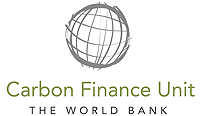Overview
The Quilleco Hydroelectric Project consists of a run-of-river power plant of 70 MW effective installed capacity (71.76 MW turbines nameplate installed capacity) run-of-the-river hydropower plant that utilizes the water discharged by the Rucúe hydropower plant (130m3/sec). The project has generated approximately 422 GWh per year and will inject 47 MW of firm power to the SIC electric grid (Sistema Interconectado Central). The estimates are based on long-term observations of water conditions of the Laja River.
Benefits
This project has contributed to the sustainable development in Chile through:
- Use of local renewable energy resources (small hydro) to displace coal and natural gas thermal power generation in the SIC;
- Increased commercial activity through clean and renewable source of power;
- Employment generation in the 8th Region where the project is located, improving economic benefits it the surrounding communities such as Tucapel, Antuco and Quilleco.
The project’s local environmental and socio-economic benefits are summarized below.
Local environmental benefits
- The project has contributed with clean energy for the Central Interconnected System of Chile, contributing to national development.
Socio-economic benefits
- The project has allowed the 8h Region to exploit its significant economic potential.
- A total of 579 local jobs have been created during the construction phase of Quilleco, positively impacting the surrounding communities of Antuco, Quilleco, Tucapel, Los Angeles and Huepil, which have a high level of rural population, poverty and unemployment compared to national average.
- Economic activity during the construction period and also during all of its lifetime.
Capacity building
- Extensive pre-negotiations consultations have been carried out and a post-negotiations workshop communicating the lessons learned from the project design and implementation.
Technology transfer
- Introduction and demonstration of environmentally friendly power production techniques for the 8th Region is an explicit objective of the project.
- The demonstration that emission reductions obtained from renewable energy can earn additional income and the introduction of CDM knowhow is expected to raise environmental awareness.
